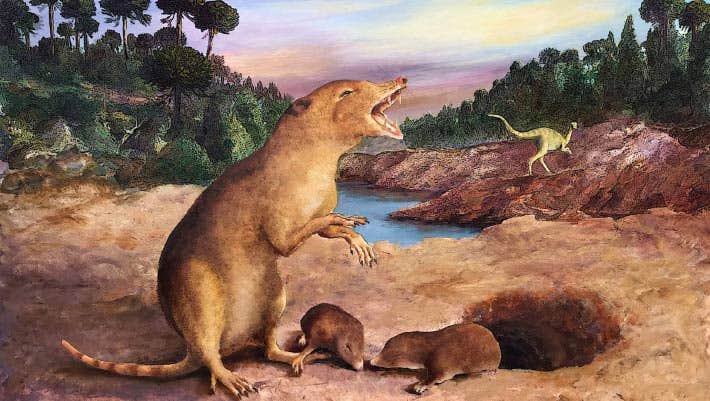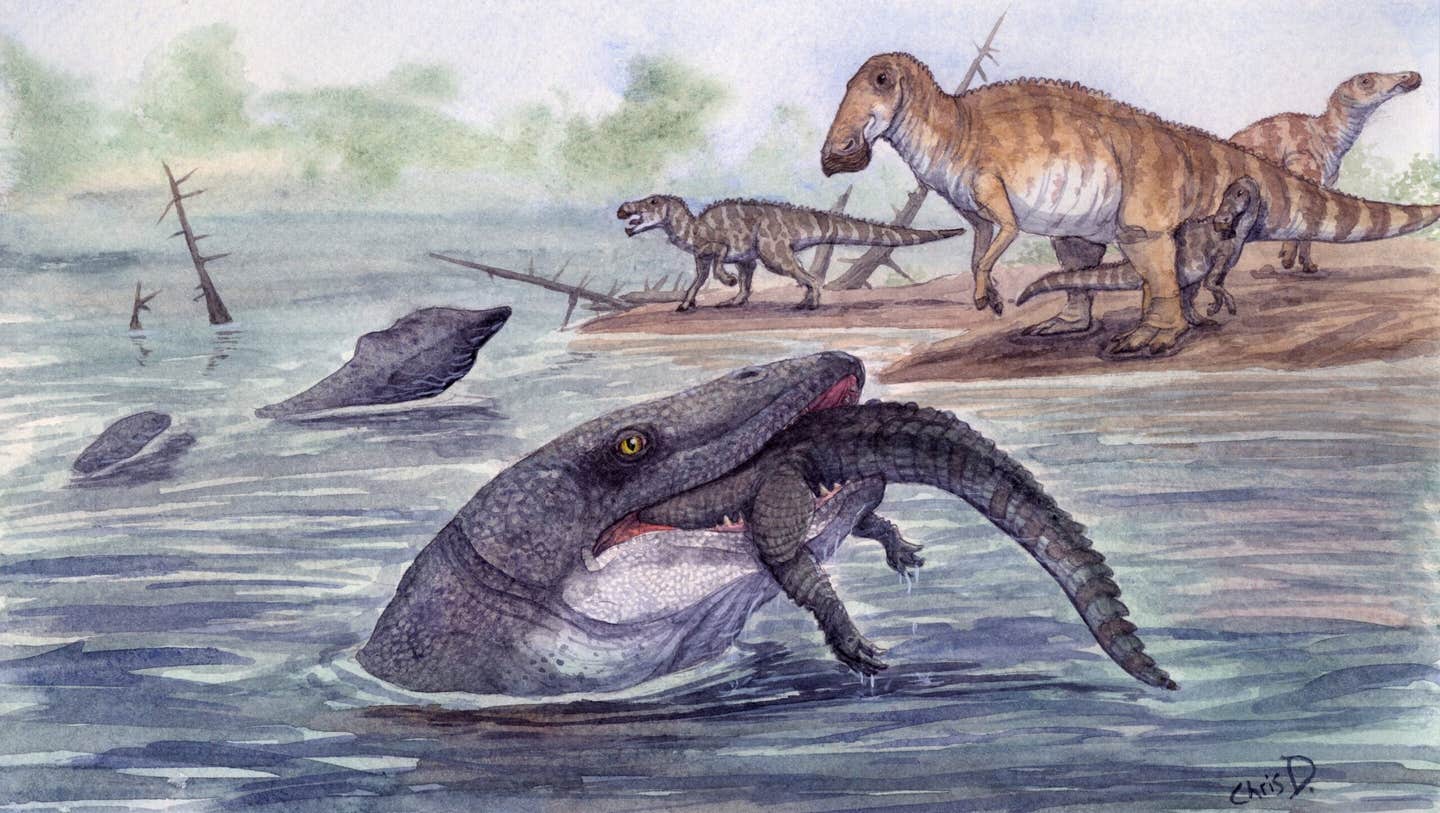Brazilian fossils reveal jaw-dropping discovery in mammal evolution
Fossils reveal mammalian jaw structures evolved millions of years earlier than expected, offering insights into early mammalian evolution.

Fossils of Brasilodon quadrangularis and Riograndia guaibensis reveal that mammalian jaw structures evolved millions of years earlier than previously thought. (CREDIT: Anatomical Society / Wiley)
Fossils from two species, Brasilodon quadrangularis and Riograndia guaibensis, offer important insights into the development of the mammalian jaw and middle ear.
These discoveries push back the timeline of key evolutionary changes, showing that mammal ancestors were experimenting with different jaw functions millions of years earlier than previously believed.
One of the distinctive features of mammals is their jaw structure and the presence of three middle ear bones, which differentiate them from earlier vertebrates that had only one middle ear bone. Scientists have long been fascinated by how these changes occurred. The new research focuses on how mammal ancestors, known as cynodonts, developed these features over time.
Using advanced CT scanning techniques, scientists were able to create the first digital reconstructions of the jaw joints of these cynodonts. This allowed them to study the detailed structure of the jaw and skull in Riograndia guaibensis and Brasilodon quadrangularis. What they found was surprising.
They discovered a "mammalian-style" connection between the skull and the lower jaw in Riograndia guaibensis. This feature appeared 17 million years earlier than the previously oldest known example of this jaw structure. In contrast, this mammalian jaw feature was absent in Brasilodon quadrangularis, a species considered to be more closely related to mammals.
This evidence suggests that the evolution of the mammalian jaw occurred independently in different groups of cynodonts and did so earlier than previously thought. It also highlights that early mammalian ancestors explored a variety of jaw configurations, experimenting with new functions and structures that ultimately contributed to the evolution of modern mammals.
Related Stories
James Rawson, the study’s lead author from the University of Bristol’s School of Earth Sciences, commented on the significance of these findings: "The acquisition of the mammalian jaw contact was a key moment in mammal evolution. What these new Brazilian fossils have shown is that different cynodont groups were experimenting with various jaw joint types, and that some features once considered uniquely mammalian evolved numerous times in other lineages as well."
This discovery sheds light on the complexity of mammalian evolution. Features such as the mammalian jaw joint and middle ear bones didn't emerge in a single evolutionary leap. Instead, they evolved in a patchwork or mosaic fashion across different cynodont lineages. This challenges the traditional view of a linear progression towards modern mammals and reveals that their early ancestors had a much more complex and varied evolutionary history.
Dr. Agustín Martinelli from the Museo Argentino de Ciencias Naturales in Buenos Aires emphasized the importance of the Brazilian fossils in shaping our understanding of mammalian evolution: “Over the last years, these tiny fossil species from Brazil have brought marvelous information that enriches our knowledge about the origin and evolution of mammalian features. We are just at the beginning, and our multi-national collaborations will bring more news soon.”
The fossil record in South America is proving to be a rich source of information for researchers studying the early stages of mammal evolution. This region has yielded a diverse collection of cynodont fossils, which are crucial for understanding the transition from early mammal-like reptiles to true mammals.
Professor Marina Soares of the Museu Nacional in Brazil highlighted this unique aspect of the research: “Nowhere else in the world has such a diverse array of cynodont forms, closely related to the earliest mammals.”
The research team is eager to continue studying these fossils and integrate the new data with existing evidence on mammalian evolution. By doing so, they hope to gain a deeper understanding of how early jaw joints functioned and how these adaptations led to the development of key mammalian traits, such as the ability to chew food more efficiently and hear a wider range of sounds.
James Rawson added, “The study opens new doors for paleontological research, as these fossils provide invaluable evidence of the complex and varied evolutionary experiments that ultimately gave rise to modern mammals.”
The findings of this study have broad implications for paleontology and evolutionary biology. By showing that early mammal ancestors experimented with different jaw functions and middle ear structures, it provides a more nuanced view of mammalian evolution. Rather than following a simple, straightforward path, the development of mammals involved multiple evolutionary "experiments" across different groups of species.
This research is just the beginning. The team’s future work will likely uncover even more surprising details about how mammals came to evolve the traits that make them unique among vertebrates.
The fossils of Brasilodon quadrangularis and Riograndia guaibensis have already rewritten part of the story, but there is much more to learn about the complex evolutionary journey that led to the mammals we know today.
Note: Materials provided above by The Brighter Side of News. Content may be edited for style and length.
Like these kind of feel good stories? Get The Brighter Side of News' newsletter.



